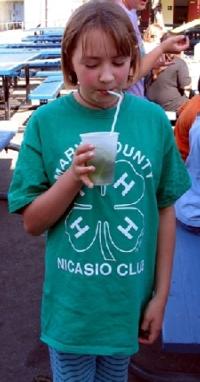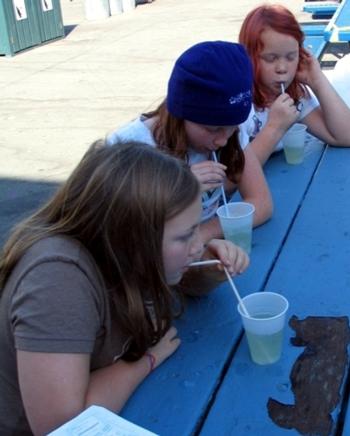4-H Delivers
Marin County offers the 4-H National Youth Science Experiment
 The Issue
The Issue

Studies continue to show the lag in science knowledge and understanding between students in the United States and other developed nations. As requirements for subject matter compete for more and more time in the classroom, teachers struggle to provide the large blocks of “discovery time” that hands-on science activities need in order to allow students to truly experience the scientific method and the moment of “ah ha!” when the relationship of the hypothesis to the result reveals itself. Combine this need with the need for greater understanding of environmental needs and one can see how very important science is to the future generations of leaders.
What did 4-H Do?
4-H science, engineering, and technology projects provide fun, engaging activities for youth that allow plenty of hands-on, experiential time for science to unfold for the youth learner. In addition, National Youth Science Day created a themed event around a science topic of importance to the world around us. This year’s third annual National Youth Science Day effort gave us yet another fun experiment. Youth came together to learn about an important aspect of their environment, to conduct an experiment to illustrate the affects of CO2 levels in the water supply and to calculate their own carbon footprint.
At Venetia Valley School in San Rafael, members of the Nicasio 4-H Club came to assist the 4-H Afterschool program and other students in conducting the NYSD experiments. Nearly 75 youth learned that CO2 levels are harmful to life, that fish need air too and that we can do our part to keep water oxygen levels at their best to support life. Club members also brought samples of water from two local watersheds to test the oxygen levels in their own areas and habitats, thereby bringing the learning home to their own backyards.
The main experiment illustrated the slow deterioration of oxygen levels in water. Participants blew their own CO2 gasses into cups of water that had been mixed with Bromothymol Blue, a chemical that detects the presence of oxygen or CO2 by its color. Everyone watched the blue solution change to green and then yellow as more and more CO2 entered the water, illustrating that the water was becoming unfit for supporting life. It is permanent? Not quite! By pouring the yellow solution into a clean plastic one gallon milk carton and shaking it, the solution changed back to blue, showing that agitating the water, as with a waterfall, can help keep water at the right oxygen level. Garbage or other debris that interrupts the flow of a stream can make water stagnant and unable to support life.
NYSD turns science learning into a fun event. At Venetia Valley NYSD, youth talked with each other over a snack, shared their results, played games and had door prizes to win.
The Payoff
Youth learned how to:
- Follow the key steps of an experiment, (planning/organizing)
- Analyze the results, (critical thinking)
- Work with a partner, (cooperation)
- Share their results and thoughts, (communication)
- Assist a younger member who is struggling (concern for others)
- Writing their conclusions (keeping records)
And everyone learned how much fun science can be!
Author: Allison Keaney, Marin County 4-H Program Representative




